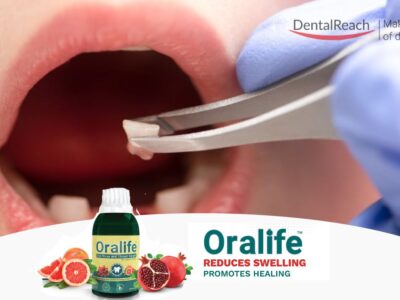Read till the end for a small surprise gift!
As a small business owner, you’ve probably thought to yourself, “I’m not a salesperson, then how can I market my self/product/service?” The sweetness of selling is that you simply can sell without actually selling!
But how can this be?
I’m going to concentrate on branding and social media marketing. I’ve had many small business owners tell me, “I post my products/services on Facebook, but nobody seems to care.” People don’t care because you haven’t given them a reason to care.
https://dentalreach.today/dental-education/8-marketing-tactics-for-dentists/
Let’s use a real-life example. Let’s say it’s the first time I met you and all I did was talk about myself, although I wanted you to do it on my behalf. Would you still converse with me? I’m not a gambler, but I feel it’s safe to bet that the answer would be ‘no’.
Give your audience a reason to love you
In social media marketing, or really any sort of marketing, you rarely want to speak about yourself. This might sound counter-intuitive but if you mention things your audience cares about, educate them about the topics you’re an expert in, and allow them to speak their minds, they’re going to be far more willing to pay attention to you – once you do talk about yourself.
Remember, you’re an expert in whatever you are doing and your audience knows that. This provides you the opportunity to showcase your expertise and build relationships along with your customers. For example, if you’re a hair salon owner, offer a daily insight about hairstyling. This can be anything from a “Tip: If you’re about to curl your hair, make sure you do not wash it for 12 hours before curling”, to a video tutorial about a way to style your hair for a black-tie event.
When you share your expertise, your customers will appreciate you for educating them about the things they’re curious about. At a subsequent time when they’re trying to find a hair salon, they’ll consider you initially because you gave them such great recommendations on the way to style your hair at home.
Your audience must love you over the neighbouring dentist, so that they can visit your clinic (and not his) the next time they have a toothache. This is important to run a competitive free dental practice. Click here to know more about this.
Send an email every month, not once a year
“No-one likes to spam people,” says Mark Brown, Director, Engage Content. “And you’re right to be concerned about sending too many emails to your patients if all of your emails are just flogging products/services. We all get emails like that, and we all delete them. They get zero engagement, and we think, well, that didn’t work, I won’t do this again.”

However, there’s a halo effect with patient communications, he says. Just seeing an email from you is enough to point to patients that you simply are thinking about them. They don’t need to read every word of it.

“And while I agree you may spam patients; you’d got to be sending out several emails each day to offer that impression. One email a month, which pulls a few of articles from your blog and perhaps has some link to interesting things you’ve seen elsewhere online, is all you wish. It sends a message to patients that you simply are thinking of them, of their oral health and general health, which you care about by being connected with them.”
Make your audience laugh
So many people are afraid to post things that aren’t directly associated with their brand. This is often a fear you would like to beat.
Again, we return to the hair salon. You can post an image of a dog having a nasty hair day and have a caption that says, “Looks like Fido should have come into the salon today.” You are going a bit off topic but are ensuring to bring it back to your audience.
Write about health, not products/services
There is one fundamental truth about patients that the majority of individual advertising campaigns don’t acknowledge. Patients come to you because they’re concerned with their own teeth. They do not come to you because of the equipment you’ve got, or the brands related to the products/services you’re offering. They come to you because they are puzzling over themselves.
“You, as a dentist, know exactly why you chose to offer one product or service as opposed to a different one,” Brown explains. “But patients don’t know the difference. They’re coming to you because they need their teeth straightened, or because they need their teeth whitened.”
“Your suppliers already promote their products. It’s your job to elucidate why that product can help that patient’s problem. When a patient or potential patient understands why you, as an expert, have chosen a specific product, they’re more likely to trust your judgement after you recommend it.
“You are the bridge between the ad for tooth whitening they say in the magazine, and the undeniable fact that your practice offers that product or service. You’re the one they’re going to trust and have a relationship with. Not the brand.”
Talk, don’t sell
Many health professionals hate the concept of selling stuff. You are, after all, providing a health service. You’re not there as a shill for a few multinational toothpaste manufacturers. So, Brown’s advice to any practice is; don’t sell stuff. Inform and educate by communicating with care. That’s what you’re good at, and it’s what you prefer to do anyway.
“You just need to find how to tell and educate and communicate and care when patients aren’t in the chair,” he says. “The easiest way to do that is written content which informs, educates and communicates about oral health and the issues people face, and what you can manage.”
“And when people read that content, see if you can capture their name and email address so that you can keep in good touch with them.
“Don’t sell them your services. Just give them great information. If you do that, and do it well, they will buy your services without you doing any selling at all.”
https://dentalreach.today/dental-education/8-marketing-tactics-for-dentist/
Use the 80/20 rule
This doesn’t mean that you simply can’t promote yourself. By building relationships together with your customers and ensuring 80% of your content is for them, you’ll then have a 20% say about yourself without the fear of scaring them away.
Now that you’ve engaged your customers with the valuable information they’re searching for, allowed them to speak about themselves and entertained them; they’ll be willing to pay attention to your promotions without feeling like they’re just another person you’re selling to.
Your promotions don’t ought to feel “salesy” either. There are ways to speak about your new product without saying, “We have a brand-new brush…come buy it now!” Never say “buy it now”, this is often a pitch your customers will run from. Instead, why not post an image of that new brush with the name below and a caption that reads, “It’s awaiting you!”
Content gives patients something, rather than selling them something. Which is a much better basis for a relationship! You can be a super dentist if you understand your patients. Read here to find out how.
What steps have you ever taken to sell without selling? Have you ever seen a rise in your customer engagement? Comment below.
Want to learn digital marketing? Click here to know 8 marketing tactics for dentists!
It is time for your surprise gift! Presenting the branding aspect of digital marketing for dentists in more detail, exclusively for DentalReach members –
Must read branding tips that attract loyal customers!




















Comments